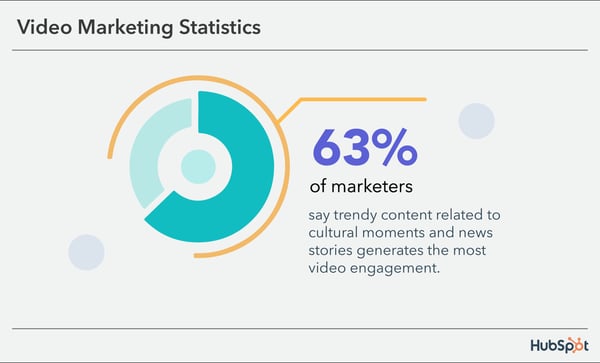![6 Short-Form Video Trends Marketers Should Watch in 2022 [New Data]](https://www.liveseo.com/wp-content/uploads/2022/07/6-Short-Form-Video-Trends-Marketers-Should-Watch-in-2022-New.jpgkeepProtocol.jpeg)
In the HubSpot Blog’s 2022 Marketing Industry Trends Survey, we found that more than half of marketers (51%) who use short-form video plan to increase their investment in 2022. Meanwhile, 38% plan to continue investing the same amount.
What’s more? Short-form video has the highest ROI of any social media marketing strategy as 30% of social media marketers plan to invest in it more than any other trend in 2022.
So, how can you join in on the short-form video action to grow your business? And what are some trends to look for in the next year? Learn what HubSpot marketing experts advise, below.
Brandon Sanders, former digital marketer for HubSpot Academy, highlights that what’s considered short-form can also depend on the platform.
“With the rise of platforms like TikTok, Reels, and Vine, short-form video is actually getting shorter and lending itself more to 60-second to two-minute videos,” he said.
“I think the perception of short-form content on platforms like YouTube is actually around that 10-minute sweet spot because content on YouTube tends to be more comprehensive and longer.”
So, when you’re thinking of short-form videos, Youtube is the exception, whereas TikTok and other growing short-form platforms are the rule.
A 2020 study by Wyzowl reported that people share videos at twice the rate than any other form of content. It also found that 84% of people were convinced to buy a product or service based on the brand’s video.
So, we already know video content is increasingly becoming an important part of every brand’s content marketing strategy.
But when we look at short-form video specifically, the data (gathered from the HubSpot Blog’s 2021 social media trends report and 2022 video marketing report) speak for themselves.
- Short-form ranks #1 for lead generation and engagement.
- Marketers will invest in short-form video more in 2022 than any other content format.
- Nearly half (47%) of marketers surveyed believe short-form videos are most likely to go viral.
- 54% of marketers surveyed say their companies leverage short-form videos.
Sanders says short-form videos give creators an innovative way to showcase their content.
“The growth of social media is causing the human attention span to become shorter and shorter,” he said. “So, leveraging the power of short-form content will give you a leg up on your competition and help engage your audience.”
Aside from length, one thing that sets short-form video apart is the trend culture.
TikTok, for instance, is run by dances, sounds, and social challenges. So, to get on the “For You” page on TikTok — which is equal to the “Explore” page on Instagram — brands must often join in on the fun.
As with any new trend or platform, former HubSpot Senior Content Strategist Amanda Zantal-Wiener says you should always consider your audience first.
“It all goes back to a very old question: Which channels are your audiences using and for what?” she said. “And therefore, for which channels does it make the most sense for your business to create this short-form content?”
This means that while short-form video is often known for its entertainment value, you can adapt it to align with your brand.
Short-Form Video Trends to Look Out For
1. Brand Challenges
When short-form videos first gained popularity, it was through viral content based on dances, songs, and sounds.
Today, brands can make their own sounds, filters, and challenges go viral.
According to our social media trends report, 20% of marketers surveyed leveraged branded challenges and 42% said they performed better than expected.
In addition, marketers rank them among the most effective social media trends of 2021.
Short-Form Video Example: Colgate
To celebrate Mother’s Day, Colgate launched the #MakeMomSmile challenge, which encourages users all around the world to share videos in which they did something special for their mothers.
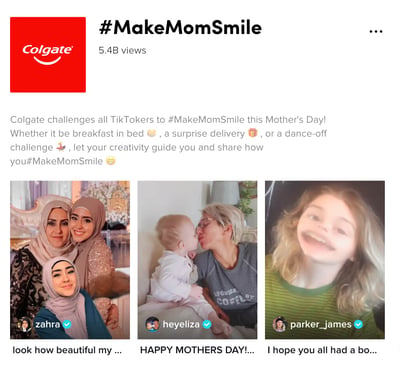
It’s also a great play on words, as Colgate is all about providing beautiful smiles to its customers.
2. Influencer Ads
Brands have been leveraging influencer marketing for years, that’s nothing new.
However, we’re seeing more brands use them in short-form video content.
HubSpot Blog Research found that 66% of marketers’ companies work with influencers on TikTok. They also rank it #5 in ROI when working with influencers.
For instance, popular TikTok influencer TiffFoods was recently in an ad for food brand Fly by Jing to promote its latest product.
Short-Form Video Example: Fly by Jing
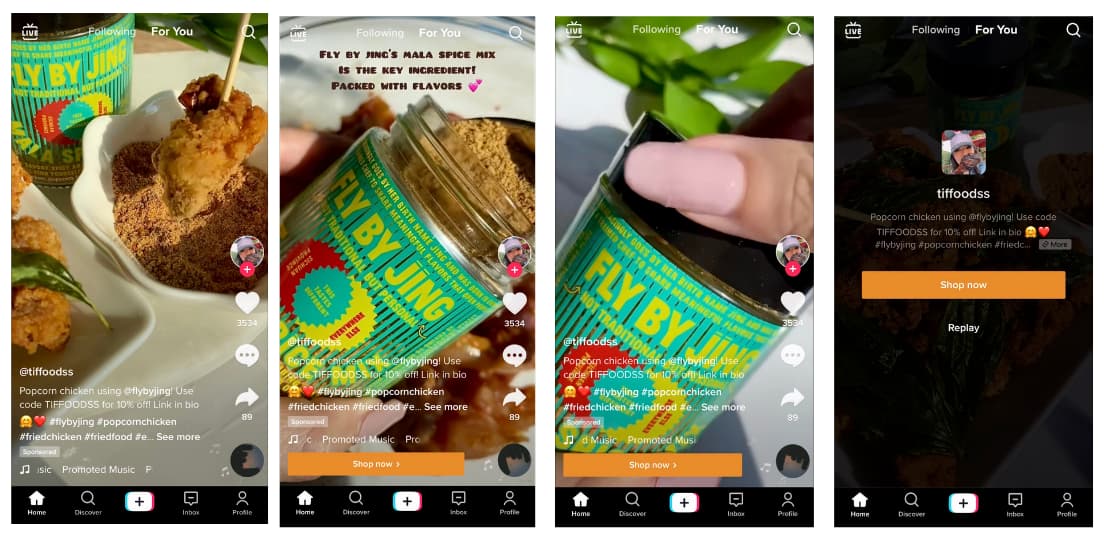
With short-form content lending itself well to native advertising, brands can create videos that are more likely to generate conversions.
3. Product Teasers
Think about the average commercial you see: It’s usually anywhere between six seconds to 60 seconds. This also happens to be the average length of a short-form video.
Because of this, brands can leverage short-form video platforms to promote their products organically.
It can be incredibly effective because it doesn’t require a large budget, it has the potential to go viral, and it builds anticipation around your brand.
Short-Form Video Example: KaseMe Design
To build anticipation for its newest product launch, KaseMe Design posts a video using a popular TikTok sound and a cleverly deceptive low-battery sign.
It creates suspense by getting users to be even more invested in the launch as they wonder what the reveal is.
4. More User-Generated Content (UGC)
Consumers generally love UGC. In fact, it influences their purchasing decisions more than brand- or influencer-generated content.
According to HubSpot Blog research, UGC also offers great ROI, with 40% of marketers surveyed ranking it a high-ROI format on social media.
Our research also suggests it’s popular with Gen-Z, which is the biggest demographic on TikTok.
Why is UGC a winning strategy? Well, without using up too many resources, brands can publish videos that evoke emotion. It’s also budget-friendly.
Short-Form Video Example: Chipotle
This is a great example of how you can leverage user-generated content in your strategy. In this instance, Chipotle collaborated with these content producers to create a fun, viral-worthy video.
One of Chipotle’s target audiences might be young, college students looking for inexpensive meals. This video features two creators who reflect the audience they may want to attract. Brands should keep this in mind when considering UGC and ask, “will my audience relate to this?” If the answer’s “yes,” move forward.
5. More Behind-the-Brand Videos
Consumers seek out authenticity and transparency in brands. With short-form video, you only have a few seconds to connect with your audience.
So, how do you do that? Well, there’s no exact science to it, but consumers tend to feel more connected to brands that show the people behind the brand.
In one Sprout Social study, 70% of consumers said they felt more connected to brands whose CEO is active on social media platforms.
So, going into 2022, brands should pull back the curtain and engage with their audiences on a more personal level.
Our social media trends report revealed that 36% of marketers surveyed currently leverage the authentic, behind-the-scenes content that’s so popular on short-form video platforms like TikTok.
Those who do use it rank it third in ROI, with 68% of marketers saying it’s the most effective content behind funny and interactive content.
Short-Form Video Example: Sierra Nicole
Trendy? Check. Informative? Check. Prompts action? Check! This video works because it has all the ingredients for an effective short-form video.
It first grabs the viewer’s attention by including a popular song and dance. The content addresses pain points viewers may be facing. Then, the call-to-action (CTA) in the caption rounds out the video by turning viewers into potential leads.
6. More Explainer or Educational Videos
In 2022, brands will likely focus on educational content in their short-form videos – think how-to’s, DIYs, and explainer videos.
A 2020 Wyzowl report found that viewers want to see more of this video style from brands.
Wondering where we currently stand? 32% of marketers surveyed in our social media trends report say they currently leverage educational content and 57% of those who do say it’s one of the most effective content types.
Educational videos are great added-value content because they help audiences in their day-to-day lives. Brands that make education a priority in their marketing strategy can improve lead generation and build stronger brand loyalty.
Similarly, explainer videos target users who are at the decision-making stage of the buyer’s journey and, if done right, they can turn decision-makers into customers.
It’s a win-win situation: Brands get to address their audience’s pain points and offer solutions, which is (surprise!) them. Not sure what I mean? See the example below.
Short-Form Video Example: Soy Yo Candle
Soy Yo Candle used this formula to create this short-form video. Presumably, one of the biggest struggles of owning candles is making them last.
In just a few seconds, the brand presented a problem, offered a solution, and promoted its product. It can be as simple as that.
Another highlight in this video is that it caters to viewers who may be discovering the brand and those who already know it. Because of the value it offers, the brand can reach a broader audience organically.
Takeaways for Video Marketers
Social Media Content Manager Kelsi Yamada says it’s a low-commitment and engaging way to connect with your audience.
“You can get a good laugh or learn something new in a minute or less on TikTok or Reels,” said Yamada.
“On the flip side, it’s also relatively easy to create, which means there are more people who can share their humor or points of view. Because of this, brands should figure out what their unique point of view is, and how they can stand out in the noise.”
The desire to be on-trend is always tempting. But Yamada stresses that brands should be selective about which trends they partake in.
“Not every viral TikTok sound or meme format will align with your content strategy or brand, so don’t force it,” she said.
“Focus on catering to your niche and staying authentic first. Don’t be afraid to make something completely from scratch – trends have to start somewhere!”
With this in mind, it’s all about finding the balance between what’s trending and what’s on-brand for your business.
Best Platforms for Short-Form Videos
- TikTok
- Instagram Reels
- YouTube Shorts
- Triller
- Hippo Video
- Magisto
- Lately.ai
- Wistia
1. TikTok
With at least 47% of its users between 10 and 29 years old, TikTok is definitely the platform for the Millennial and Gen Z population.
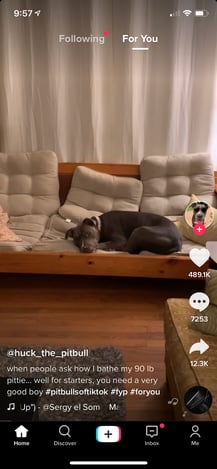
The TikTok homepage features a timeline of videos separated into two tabs. The “Following” tab with videos posted by the user’s followers, and the algorithm-driven “For You” page based on user behavior (what they like, comment on, scroll past, etc.)
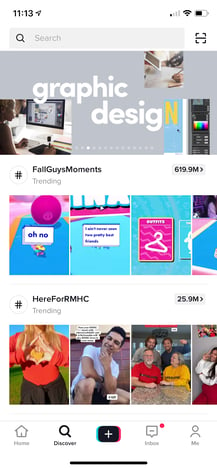
The “Discover” tab on TikTok highlights trending topics and hashtags, a great resource for marketers to generate new content ideas.
B2B marketers have been wary of using the platform, but it could be because success on the platform relies on emotional appeal. Yet, that emotional appeal may be exactly what they need.
According to a LinkedIn study, B2B strategies that appeal to emotions are seven times more effective for revenue generation than “rational messaging.”
Still not quite convinced TikTok is a viable marketing platform for your business? Check out this video explanation of how TikTok has grown into one of the most go-to platforms for short-form content today.
Now, it may be time to start practicing those dance moves.
2. Reels
Some call it TikTok 2.0, but Instagram Reels is proving to be its own beast.
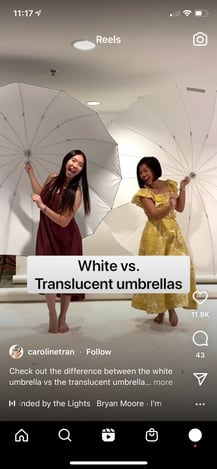
The Reels tab on Instagram is a scrollable video timeline, similar to what users see on their Explore page. From this page, users can click on the music the account used to see what other Reels feature that sound.
With over 1 billion active monthly users, Instagram already had consumers’ attention. When they launched Reels back in August of 2020, it became another marketing tool for brands and a worthy opponent for TikTok.
Instagram caters to a broader age demographic than TikTok. And when considering their other marketing features, Reels is another way for brands to expand their reach in a minute or less.
3. YouTube Shorts
YouTube Shorts is Youtube’s latest attempt to turn its long-form video platform into one that also houses short-form content.
YouTube first started testing it in September 2020 and it is now available to users globally.
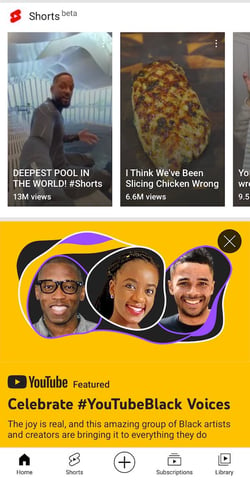
When using YouTube’s mobile app, you’ll see that Shorts now have their dedicated tab on the platform. Users can create Shorts up to 60 seconds and, similarly to other short-form video platforms, can edit the videos directly within the app.
4. Triller
Triller is Tiktok’s musical theater friend (or rival), the one who bursts into song anytime, anywhere without cause or notice.
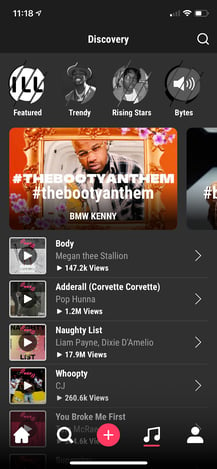
Triller’s homepage looks similar to other short-form video platforms. However, They have made music a prominent feature on the app by making top and trending music the main tab.
The platform is popular among musical artists and allows users to edit 60-second videos within the app. This includes music, filters, effects, and transitions. Triller grew in popularity earlier this year when there was some uncertainty surrounding a TikTok ban in the United States.
With music playing a key role on the app, marketers should use music as a storytelling element in their videos. For instance, the song “You Got It” by Vedo, a song about unlocking your potential, made its rounds on Triller last year.
A recruiting firm could’ve used that sound to create a short video targeting job seekers. The song would also work great as a backdrop for a business coaching company advertising its services. The limit does not exist.
5. Hippo Video
If you want to take short-form video content beyond social media, there’s Hippo Video.
The video marketing platform gives brands a one-stop-shop to produce, distribute, and analyze their video content. Users can also embed forms, CTAs, and annotations within the video, making conversions easier.
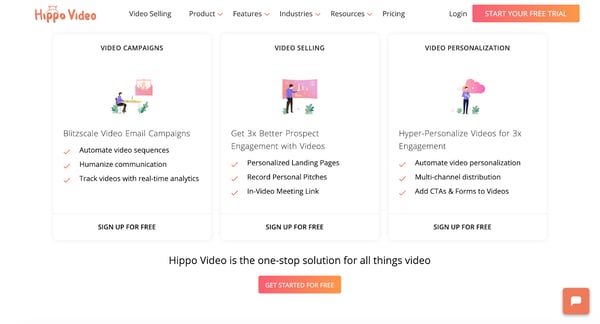
For example, let’s say a SaaS company is launching a new product and the marketing team is using Hippo Video for the email campaign.
On launch day, they can send a product teaser video to current customers and include a “Schedule a Demo” CTA, leading users to a meeting scheduling page.
During the campaign, the team can track key metrics like total plays and average watch rate — taking video analytics to another level.
6. Magisto by Vimeo
Vimeo recently acquired Magisto, a video editing software that makes video marketing easy through artificial intelligence (AI).
The first step is uploading your videos. The software will then analyze the videos and put them together based on the video editing style you’re looking for. They have over 10 editing styles ranging from real estate and fitness to Facebook and YouTube ads.
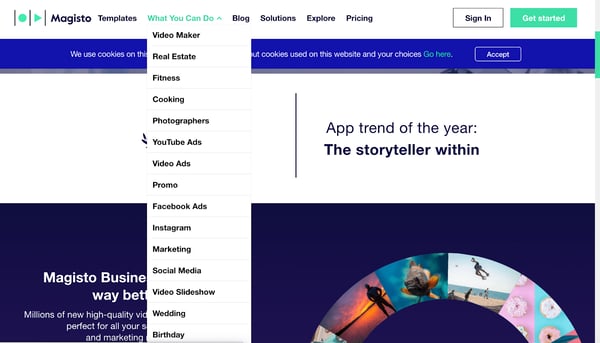
Once you select the style you’re looking for and the video is complete, you can distribute it on social media platforms and track the analytics.
This platform is ideal for brands that don’t want to spend too much time or too many resources on video marketing. This app does it so you don’t have to.
7. Lately.ai
If your brand is short on time and resources but wants to leverage short-form video, consider Lately.ai.

This software, powered by AI, takes long-form audio, video, and text and atomizes it into snackable posts for social media. How does it know what will work? That’s where the AI comes in.
It looks at what content your audience is most likely to respond to based on historical data and creates from there. It’s a great tool for brands who are dipping their toes in short-form content and want to build from their current library.
8. Wistia
Wistia is a leader in the video hosting industry, helping more than 300,000 businesses manage their video content and grow their audience.
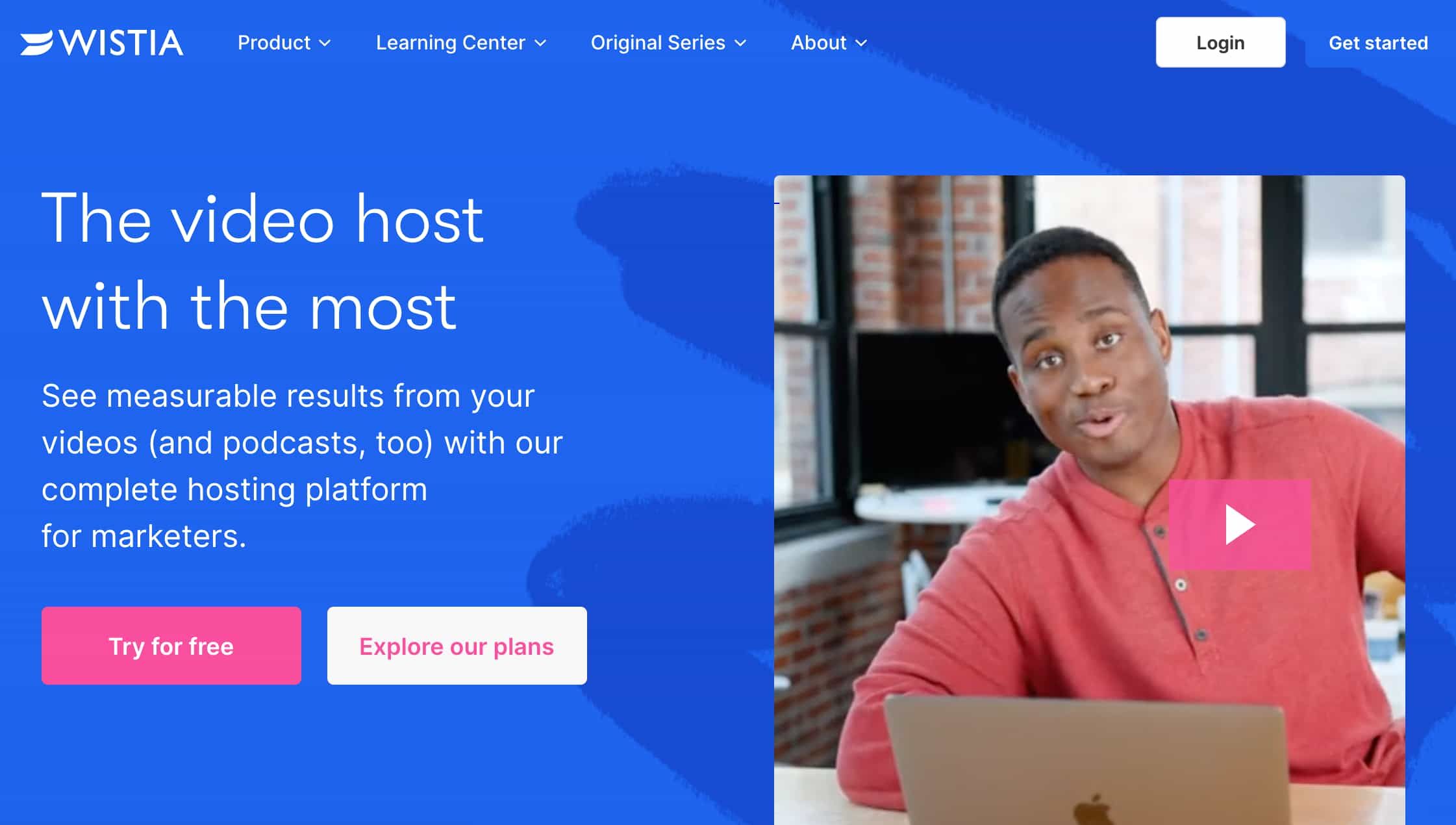
When using this platform, you can build a customizable video player that matches your brand, use lead generation tools, and track your videos’ performance to gain insights.
You can also create custom ad audiences for search and social to ensure your content reaches the right audience and use integrations to sync all your tools.
There are hundreds of ways to incorporate short-form videos into your marketing strategy. But no matter which trends come and go, it will always come back to your audience.
Try a few approaches, and listen to where the data tells you to go next.
Editor’s Note: This post was originally published in Jan. 2021 and has been updated for comprehensiveness.

